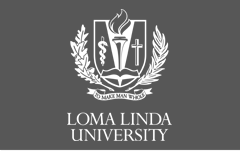Abstract
CASE REPORT: The authors report a case in which a 23- year-old male with a history of migraines presents to the emergency department after waking up with a headache, vertigo, tinnitus, nausea and vomiting, six hours prior to arrival. Upon initial emergency department triage assessment, the patient passed the Fast Arm Speech Test (FAST) screening exam and a hyperacute stroke protocol was not activated. The complete neurologic assessment was unremarkable aside from an ataxic gait and a positive Romberg’s sign. However, Head-Impulse-Nystagmus-Test of Skew (HiNTs) exam revealed findings consistent with a cerebellar lesion. Subsequent emergency department imaging via head and neck computed tomography angiography (CTA) revealed a left superior cerebellar artery occlusion with associated left superior cerebellar territory infarct and a tiny right cerebellar infarct. The patient was not a candidate for tissue plasminogen activator (tPA) or mechanical thrombectomy and was admitted to the neurology stroke unit.
Posterior circulation (vertebrobasilar) strokes are a less common cause of acute strokes, making up twenty percent of all cerebrovascular ischemic events1. However, posterior circulation strokes are three times more likely to be missed due to atypical symptoms2 and have greater mortality and morbidity when misdiagnosed3. Furthermore, although early-onset strokes are uncommon4, typically documented causalities such as vasculopathies, cardiac defects, and hypercoagulable states are not found in up to fifty percent of these cases5. This case report serves as a reminder of the atypical presentation in posterior circulation stroke presentations as well as the cryptogenic nature of early-onset strokes and demonstrates the utility of the HiNTs exam in distinguishing cerebellar versus peripheral lesions in the Emergency Department.
Recommended Citation
Chen, Natalie
(2020)
"Cryptogenic Posterior Circulation Stroke in a Young Adult - Utility of the HiNTs exam in the Emergency Department,"
Loma Linda University Student Journal: Vol. 4:
Iss.
1, Article 4.
Available at:
https://scholarsrepository.llu.edu/llu-student-journal/vol4/iss1/4

